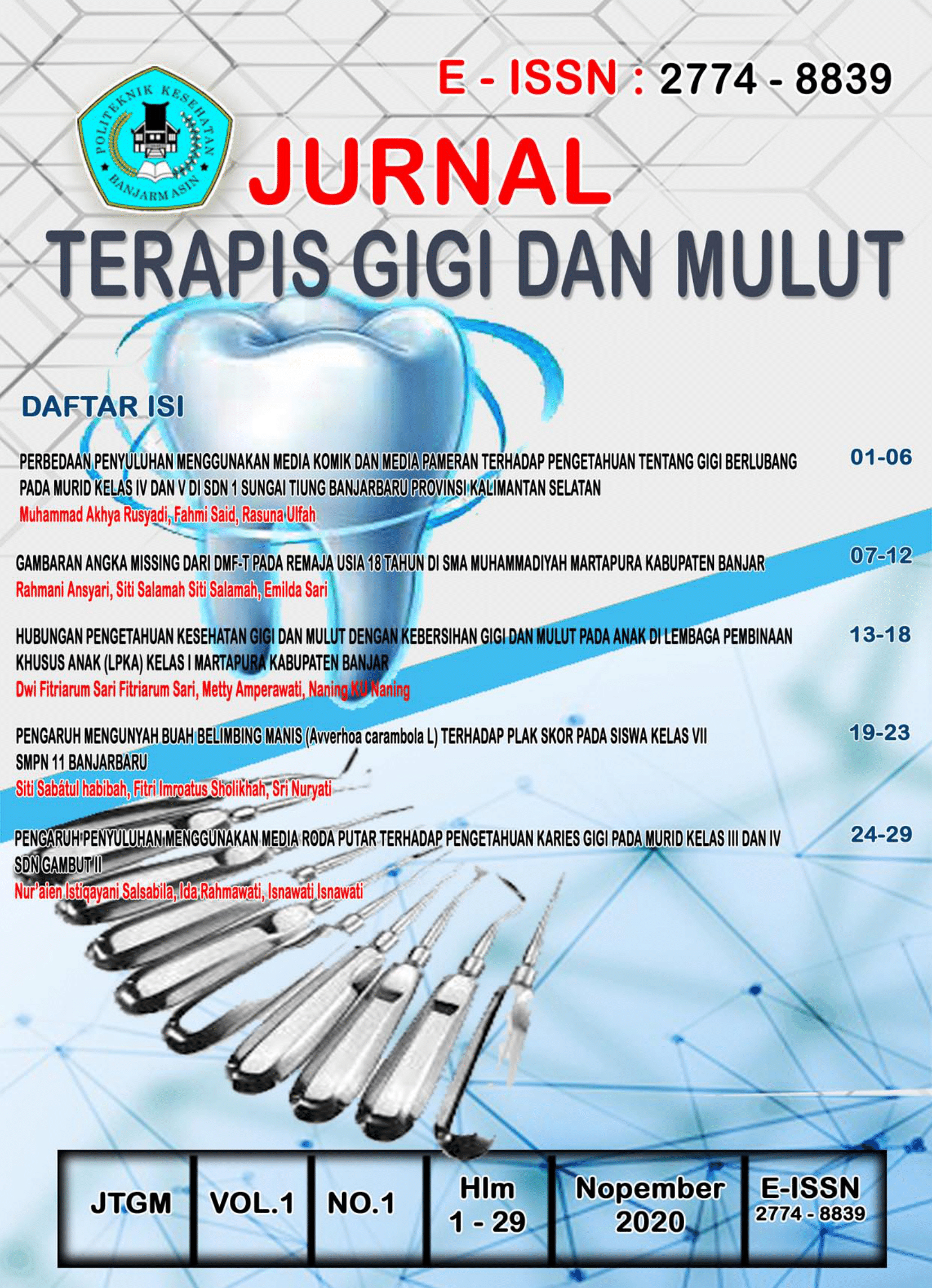GAMBARAN ANGKA MISSING DARI DMF-T PADA REMAJA USIA 18 TAHUN DI SMA MUHAMMADIYAH MARTAPURA KABUPATEN BANJAR
Main Article Content
Abstract
The indicator for the degree of dental and oral health in 2010 from WHO for the M (missing) component of DMF-T for 18 years of age was 0, while the 2007 RISKESDAS (Basic Health Research) results for the M (missing) component of 18-year-old DMF-T were 0.47, then RISKESDAS 2013 of 0.45. Although the DMF-T rate was small, the ratio between the filled teeth and the untreated teeth was very large, namely 0.7% of cases handled by dental health personnel. The remaining 62.3% have not been treated and 26.2% have already been revoked. If left unchecked, the teeth will get worse so that the indication for extraction will increase, which in turn will increase the number of missing.
The purpose of this study was to describe the missing number of DMF-T in adolescents aged 18 years at Muhammadiyah Martapura Senior High School, Banjar Regency. This research is a descriptive type of research with data processing in the form of data tabulations. The sampling technique was total sampling with a total sample size of 42 students.
The results of the study of 42 respondents, the missing number from DMF-T was 38 with an average of 0.90. The missing number (tooth loss) obtained from the TLI (Tooth Lost Index) is 46.9%.
In conclusion, the number of missing from DMF-T in adolescents aged 18 years at Muhammadiyah Martapura Senior High School, Banjar Regency is 38 with a TLI of 46.9%, in respondents due to caries. It is suggested for UKS teachers to work together with the Puskesmas to run the UKGS program, and for health workers to provide understanding or knowledge for those who are indicated missing about prosthesis (dentures) which can prevent further consequences of missing.
Keywords: Missing rate, 18 years old adolescents
